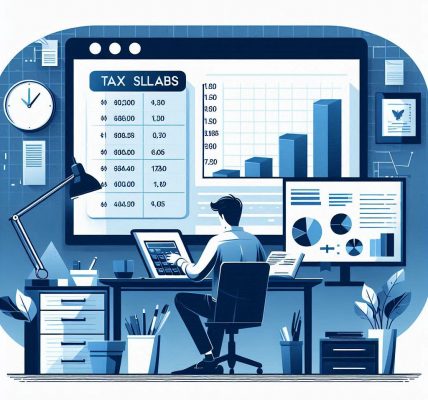When planning for retirement, one of the most critical yet often overlooked aspects is tax planning. It’s essential to understand how taxes will impact your savings and investment growth over the long term, as they can substantially erode the value of your retirement corpus. Effective tax planning can help you save more, grow your wealth faster, and ensure a financially secure retirement.
In this blog, we’ll discuss how tax planning plays a crucial role in retirement savings and how you can use it to your advantage. Whether you’re just starting your career or are nearing retirement, the earlier you begin integrating tax planning into your retirement strategy, the more benefits you’ll enjoy.
Why is Tax Planning Crucial for Retirement Savings?
Retirement savings are built over many years, and the compound growth of your investments can be significantly influenced by taxes. Without proper tax planning, the taxes on your income and investment returns can reduce the amount available for retirement.
Some of the key reasons tax planning is crucial for retirement savings include:
- Tax Deferral: Tax planning allows you to defer taxes until retirement, which gives your investments more time to grow without the immediate burden of tax payments.
- Tax Efficiency: By choosing tax-efficient investments and strategies, you can reduce the taxes paid on your retirement savings, leading to higher returns.
- Tax Diversification: Having different types of retirement accounts, such as tax-deferred, tax-free, and taxable accounts, allows you to manage the impact of taxes in retirement.
- Maximizing Contributions: Through tax-advantaged retirement accounts, you can contribute more towards your retirement while reducing your taxable income.
Key Tax-Advantaged Retirement Accounts
Understanding tax-advantaged accounts is essential to reducing your tax burden while saving for retirement. Let’s look at some of the most popular retirement accounts that offer significant tax benefits.
1. Public Provident Fund (PPF)
In India, the Public Provident Fund (PPF) is one of the most preferred tax-saving instruments for retirement planning. It’s a government-backed scheme that offers tax-free returns and long-term savings.
Tax Benefits:
- Tax Deduction: Contributions to PPF are eligible for tax deduction under Section 80C of the Income Tax Act, up to ₹1.5 lakh per year.
- Tax-Free Returns: The interest earned and the maturity amount are both tax-free.
- Long-Term Growth: With a 15-year lock-in period, PPF allows you to build wealth over a long duration.
Role in Retirement: PPF is an excellent tool for retirement planning because it provides tax-free returns over a long period, ensuring your retirement corpus grows without the burden of taxes.
2. Employee Provident Fund (EPF)
The Employee Provident Fund (EPF) is a mandatory retirement savings scheme for salaried individuals in India, where both the employee and employer contribute a percentage of the employee’s salary.
Tax Benefits:
- Tax Deduction: Employee contributions are eligible for tax deductions under Section 80C.
- Tax-Free Interest: The interest earned on EPF is tax-free.
- Tax-Free Withdrawals: Upon retirement, the lump sum amount withdrawn from EPF is tax-free.
Role in Retirement: EPF offers a reliable and safe way to save for retirement while reducing your taxable income in the short term.
3. National Pension Scheme (NPS)
The National Pension Scheme (NPS) is a government-sponsored retirement savings plan that allows individuals to build a retirement corpus with tax-saving benefits. NPS provides a mix of equity, government bonds, and corporate bonds for a diversified portfolio.
Tax Benefits:
- Tax Deduction: Contributions up to ₹1.5 lakh to NPS qualify for tax deductions under Section 80C. Additionally, you can claim an additional ₹50,000 under Section 80CCD(1B).
- Tax-Free Returns: The returns earned through NPS are taxable at the time of withdrawal, but the contribution benefits make it an attractive option for tax-efficient retirement savings.
Role in Retirement: NPS allows you to build a substantial retirement fund while enjoying tax-saving benefits both during the contribution phase and at the time of withdrawal.
4. Voluntary Provident Fund (VPF)
The Voluntary Provident Fund (VPF) is an extension of the EPF, where employees can contribute more than the mandatory EPF contribution. This provides the opportunity for higher savings with tax benefits.
Tax Benefits:
- Tax Deduction: Contributions to VPF are eligible for tax deduction under Section 80C.
- Tax-Free Interest: Interest earned on VPF is tax-free.
- Safe Investment: Like EPF, VPF is backed by the government, offering guaranteed returns.
Role in Retirement: VPF can be a great option for employees looking to maximize their retirement savings while enjoying tax-free interest accumulation.
Tax Planning Strategies for Retirement Savings
Apart from using tax-advantaged retirement accounts, here are some additional tax planning strategies to enhance your retirement savings:
1. Maximize Contributions to Tax-Deferred Accounts
Contributing the maximum amount allowed to tax-deferred accounts such as EPF and NPS will help reduce your taxable income. These accounts allow your money to grow tax-free until withdrawal, which can significantly increase your retirement corpus.
2. Focus on Long-Term Investments
Investing for the long term allows your money to grow through compound interest. Long-term investments often have lower capital gains tax rates compared to short-term investments, which can boost your returns over time. Focus on investments that have the potential for high returns, such as equities, as part of your retirement strategy.
3. Rebalance Your Portfolio Regularly
As you approach retirement, it’s essential to adjust your investment portfolio to reduce risk and focus on more stable, income-generating assets like bonds or debt funds. Tax-efficient funds, such as tax-saving fixed deposits or tax-free bonds, can be an integral part of your portfolio.
4. Utilize Tax-Free Withdrawals
Once you retire, you’ll want to withdraw your funds in a way that minimizes your tax liability. Consider withdrawing from accounts with tax-free returns, such as PPF or EPF, to maximize your income after retirement. Use the NPS withdrawal option strategically to minimize taxes on your retirement fund.
Conclusion: Smart Tax Planning for a Secure Retirement
Tax planning is a critical component of your overall retirement strategy. By understanding the tax implications of your savings and investments, you can make smarter choices, save more, and ensure a financially secure retirement.




